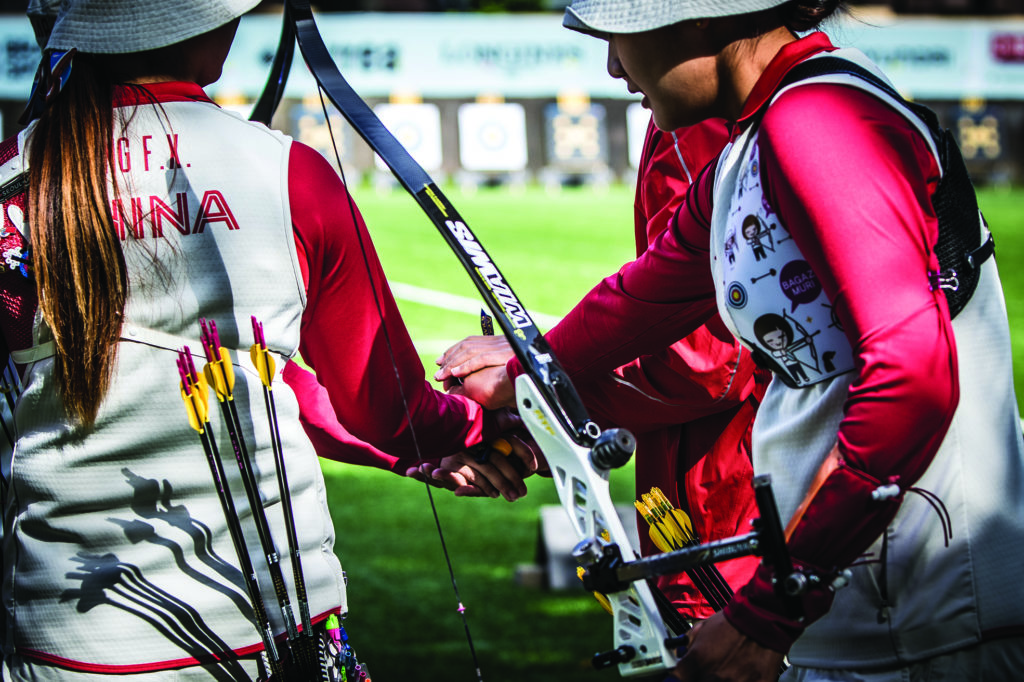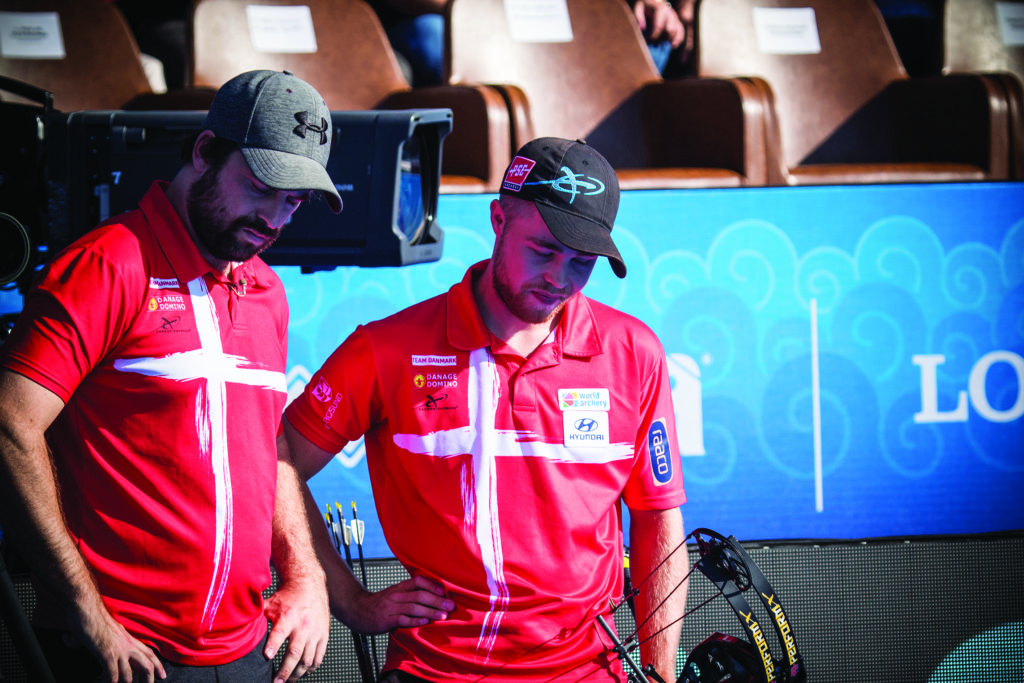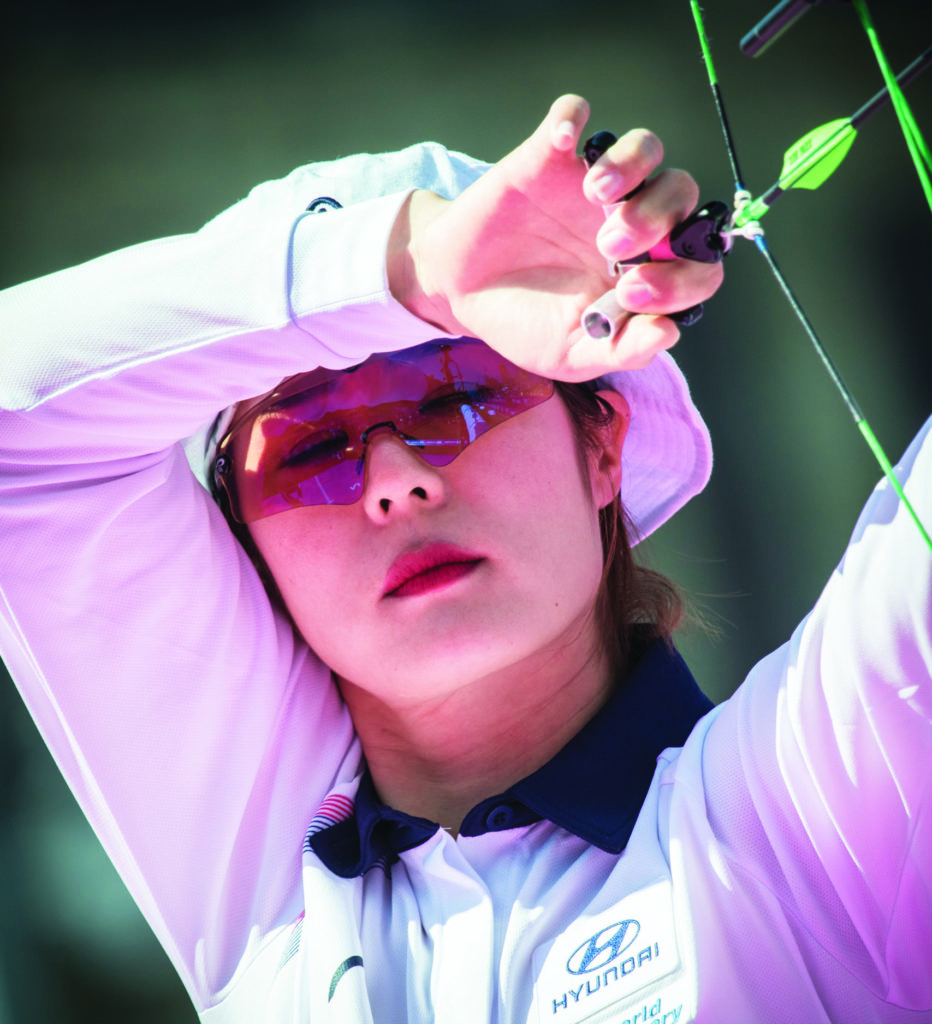Our expert panel answers your questions. Send them in!
Question: Is there a point where the Easton arrow spine chart just doesn’t work anymore? I shoot 38lb but I’m quite small and have 24in arrows, and I simply can’t find an arrow that works for me. I used to shoot X10s but I have to cut so much off them that I don’t think they’re even barrelled any more. I don’t see the point in using expensive arrows if I need to cut them past their maximum recommended trim. Do arrow manufacturers not expect somebody with a short draw length to be shooting at a high enough level to need good arrows?

Adrian Tippins says: There are certainly scenarios where arrow selection charts don’t quite fulfil the needs of certain configurations and individuals. These problems usually manifest themselves at the extreme ends of the selection process.
Prime examples of this are an archer requiring short arrows for high poundage, and one requiring very long arrows for low poundage. The latter is more common, when an extra-tall person is doing a beginner’s course or is new to the sport and looking for their first set of arrows to go with a low poundage bow.
While manufacturers do their best to accommodate as many archers as possible, there will always be those who have needs that are way out on the periphery and not slap bang in the mainstream. Ultimately, companies are in the business of making money.
Although it isn’t impossible to design and manufacture products to suit everyone’s needs, it can certainly be cost prohibitive in terms of tooling and so on. This is especially true with product that, by its sheer specification, would mean it would only appeal to a very limited market.
Archers who need very short arrows will often need to shoot much higher poundages to hit specific distances than those with a more mainstream arrow length.
This is obviously down to deriving less power from the limbs of the bow. Easton does offer a full complement of arrows for those shooting 38lb peak holding weight with a 24in arrow. This would fall into the category of ‘T1’ on the selection chart.
In some of the zero groups, such as 02 and 03 ACE arrows become available but not X10s. The problems tend to come when the 38lb isn’t the holding weight but is actually the marked limb weight.
As the limbs would be underworked, a substantial amount of power would be lost and the bow would be shooting closer to 30lb than 38lb. This is why everyone should have their bow weighed at the correct draw length before buying new arrows to ensure they get the right product.
Top-end barrelled arrows commonly do have a maximum trim amount. The trim amounts generally vary from spine to spine, with some having as little as 3.5in and some having no limit. The trim amounts ensure that all the physics of design and aerodynamics function properly.
The trim limitations also make sure the arrows aren’t cut into the actual barrelled zone. If this happens, the shaft will be wider than the shoulders of the point. This will leave the exposed carbon proud of the points, which will certainly get damaged. You don’t experience such problems with parallel arrows.
It’s never easy being on the fringes and those who are would dearly like to have the widest possible choice open to them. That said, there are lots of good parallel shafts to choose from if the barrelled options aren’t working for you.
Some of these punch way above their price point. There’s a good argument to be made for shooting a midrange shaft that has the right configuration for your style of shooting.
Experiment with point weights and drag factors to see if you can’t get a more budget shaft to work well for you.
Question: I spent a few months shooting compound a few years ago and really enjoyed it, but I had an accident when the release aid slipped from my hand and hurt me and now I’m scared to pick up my bow again. I can’t stop thinking about how much worse that accident could have been. How do I get over this fear and get back to shooting safely?

Duncan Busby says: I will start by reassuring you that many of us have, at some point, let go of our release aids and it can be a frightening experience; especially if it results in an injury. Having an accident like this can understandably cause a lot of negative feelings and make you nervous to pick your bow up again.
To conquer this fear you need to rebuild your confidence in both yourself and your equipment. I’d first recommend getting a release aid that incorporates some kind of wrist strap; this will help to give you some reassurance that if you did let go of your release aid again it can’t fly off and cause damage or injury.
There are various models of hand-held releases available that either come with a wrist strap or can be retro-fitted with a one. If you still feel uneasy with the thought of a hand-held release, you could try switching to a finger-activated wrist release instead. These don’t require you to keep hold of the device so it’s impossible to let them go.
Whichever option you decide to go with, it’s important that you start shooting again in a controlled and safe way. I’d suggest beginning on a blank target, set fairly close in a setting where you feel unpressured and at ease. Slowly build up the number of arrows you shoot until you feel confident enough to start shooting at a target face again.
As you continue to shoot you should begin to feel more confident, as muscle memory and instinct take over. You cannot rush this process; bad memories can affect your confidence for a long time but it is vital to get back behind the bow as soon as possible.
By not shooting you can make your fears so much greater, especially when the last thing you did on the shooting line is injure yourself. If you have had a bad experience remember to:
- Focus on the process; you’ll never be able to regain confidence in your shot if you’re an injury, so concentrate on your actions not the end result.
- Be positive about your performance; you have made far more good releases than you have bad ones.
- Rebuild your confidence; one mistake doesn’t define you; you can shoot well and the more you practise the fewer mistakes you’ll make.
- Find support; your fellow archers have all been there too and we’re more than willing to help each other through tough times.
- Learn from your failures; we all have set-backs but it’s how we bounce back from these that determine how confident an archer we become.
- Find the enjoyment again; remember why your chose to pick up a bow in the first place.
- Archery is our passion and no matter how many frustrations and injuries we get, we continue to shoot for the love of our sport.
Good luck and welcome back!
Question: Is there a best option for execution with a thumb trigger release? I’ve watched the videos of various pros doing it and I’m still not sure exactly what I should be doing.
Roy Rose says: The broad and pertinent answer is that the best method is the one that enables you to attain a comfortable and duplicative result but, of course, that is not the definitive reply you are seeking.
In truth there is a multitude of execution options with a thumb trigger, and all of them work for a particular competitor. But speaking generally, as regards the top professional compounders, there is a fairly specific method that a majority utilise, and there is strong logic as to why. It first involves the set-up of the release trigger tension, so that there is none or negligible travel, and is reasonably ‘hot’.
What I mean by that is that the thumb placement is gentle when applied, so the release will not go off prematurely, but which then only requires minimum expansion or finger pressure to cause the shot to break. To the naked eye, there appears to be very little, or nothing, happening, to cause execution.
So: an anchor, a gentle thumb placement, seemingly little pulling or expansion, then a rhythmic release. I say rhythmic because even though the break of the shot must be unanticipated, because the set-up is as I’ve outlined, the shot will go off quite quickly and within a certain time frame. Shots that ‘hang up’ and exceed the normal time are less sure to occur, and those that do are the ones most likely to be errant.
The clear advantage of this type of execution is that it maximises aiming steadiness, because there is minimum motion happening.
If this procedure is employed, the trick is to find that precise tension setting where the thumb simply rests on the post then little motion is required to obtain execution.
If the tension is too hot, premature firing will occur, so it must be enough for gentle, consistent thumb placement minus that contingency, but not stiff enough to necessitate major motion.
So logically, getting that balance is the precise factor in play, and can only be reached with dedicated practice – and possibly trying a different release.
To be clear, this is not the method universally in play. Many quality shooters operate on a different premise with much greater thumb engagement, and a more defined pulling action. However, across the board, the option most utilised is the one I’ve outlined.
The reasoning behind it is sound and, with patient practice at ascertaining that balance between post tension, thumb engagement, and pulling motion, it is easy to see why it is so popular and gets the results.


